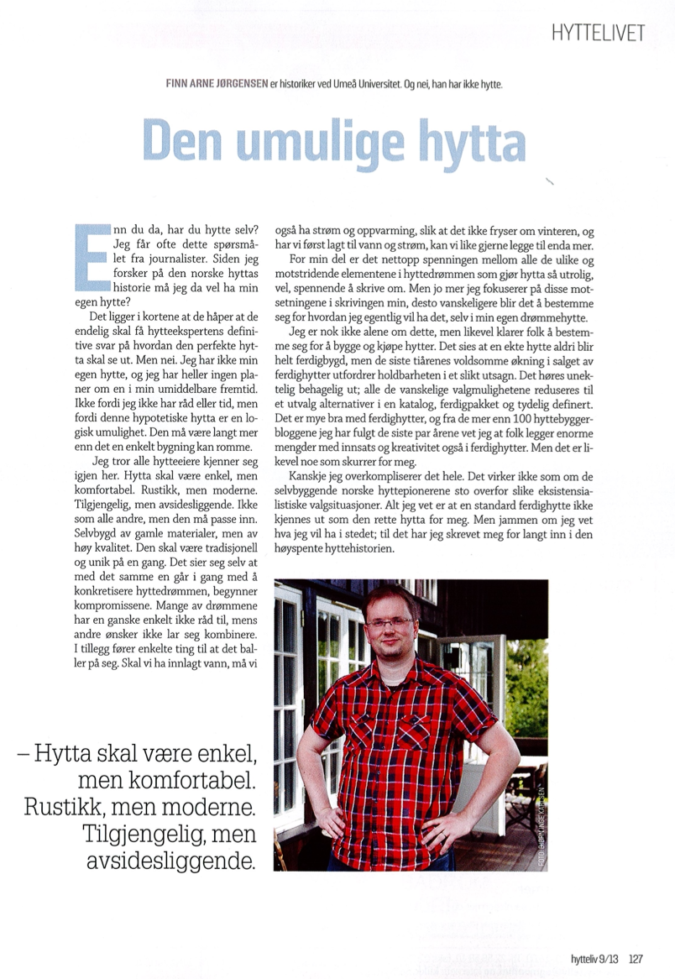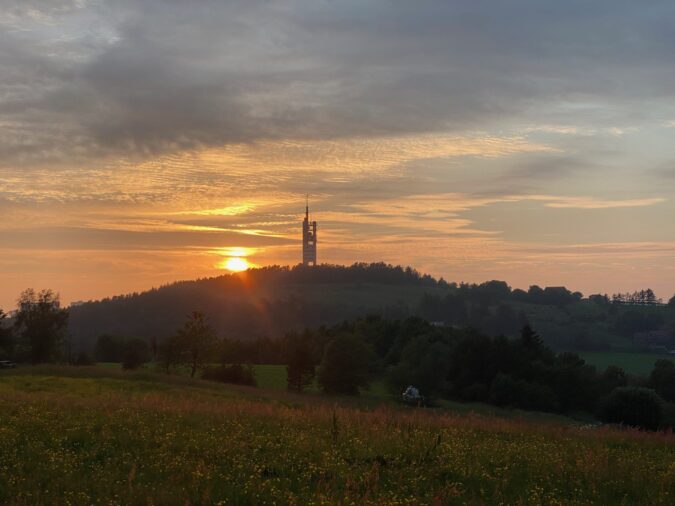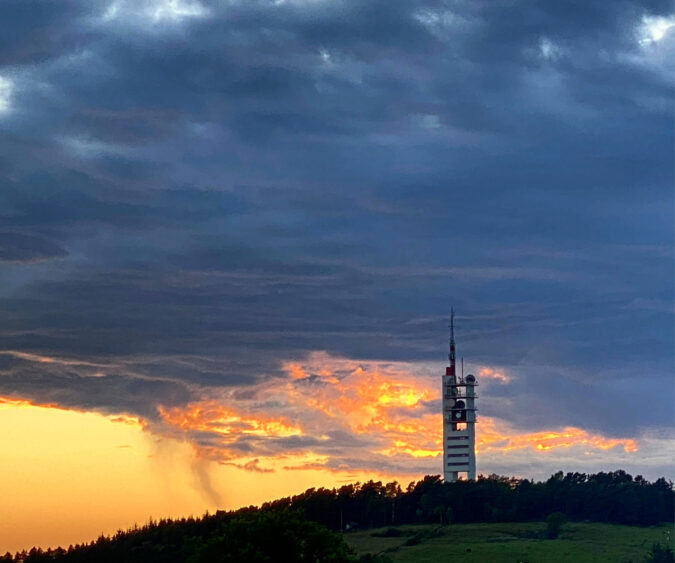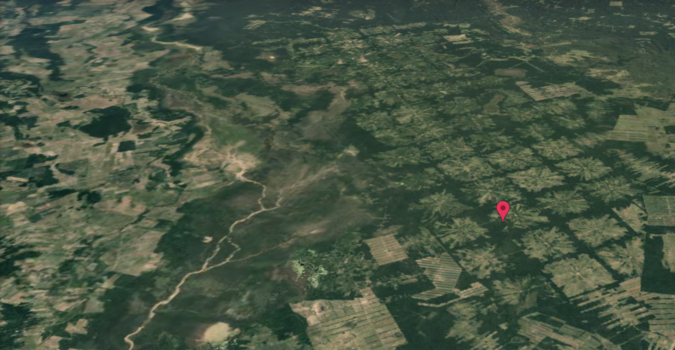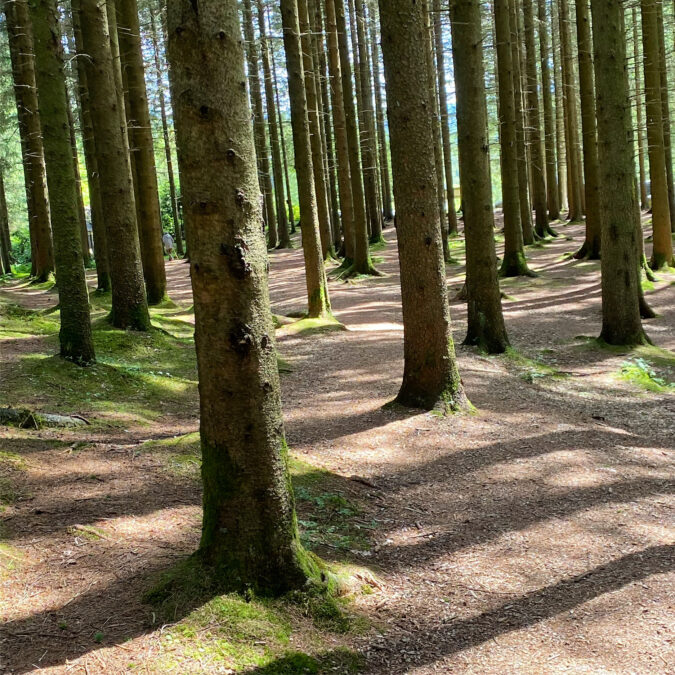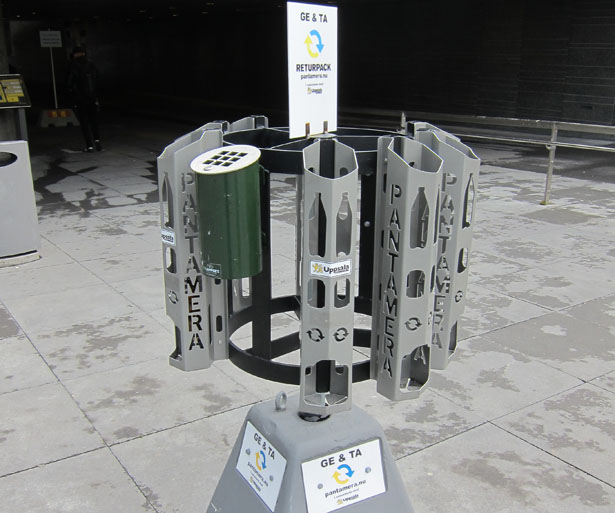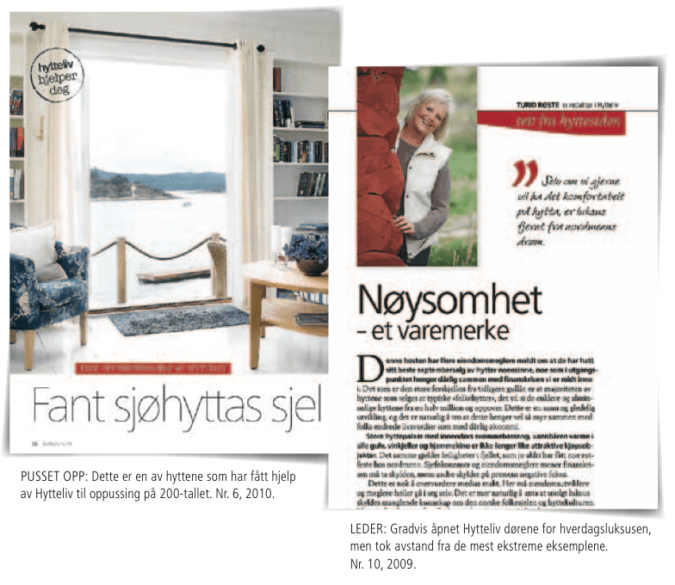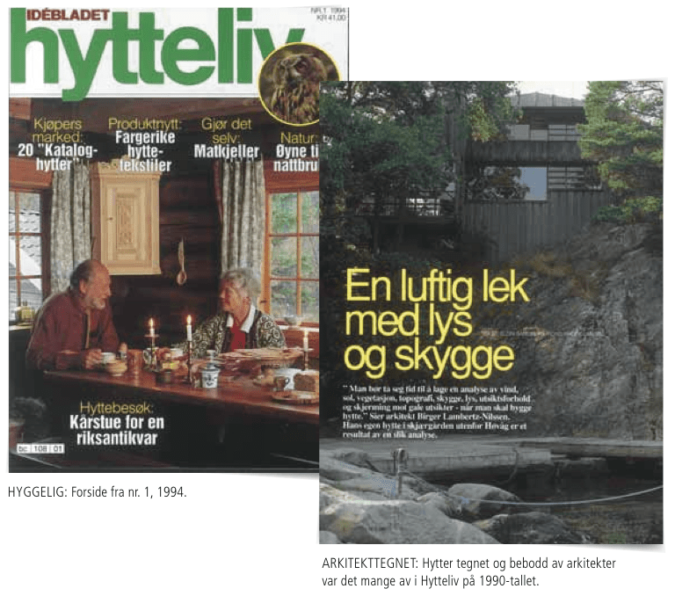– ”Enn du da, har du hytte selv?” Jeg får ofte dette spørsmålet fra journalister. Siden jeg forsker på den norske hyttas historie må jeg da vel ha min egen hytte? Det ligger i kortene at de håper at de endelig skal få hytteekspertens definitive svar på hvordan den perfekte hytta skal se ut. Men nei. Jeg har ikke min egen hytte og jeg har heller ingen planer om en i min umiddelbare framtid. Ikke fordi jeg ikke har råd, selv om jeg definitivt har andre ting å bruke pengene mine på. Ikke fordi jeg ikke har tid, selv om jeg kjenner tidsklemma hardt for tiden. Men fordi denne hypotetiske hytta er en logisk umulighet – den må være langt mer enn en enkelt bygning kan romme. Jeg tror alle hytteeiere kjenner seg igjen her. Hytta skal være enkel, men komfortabel. Rustikk, men moderne. Tilgjengelig, men avsidesliggende. Ikke som alle andre, men den må passe inn. Selvbygd av gamle materialer, men av høy kvalitet. Den skal være tradisjonell og unik på en gang. Det sier seg selv at med det samme en går i gang med å konkretisere hyttedrømmen begynner kompromissene. Mange av drømmene har en ganske enkelt ikke råd til, men andre ønsker lar seg rett og slett ikke kombinere. I tillegg fører enkelte ting til at det baller på seg. Skal en ha innlagt vann i hytta må en også ha strøm og oppvarming slik at det ikke fryser om vinteren, og har en først lagt til vann og strøm kan en like gjerne legge til enda mer. For min del er det nettopp spenningen mellom alle de ulike og motstridende elementene i hyttedrømmen som gjør hytta så utrolig, vel, spennende å skrive om. Men jo mer jeg fokuserer på disse motsetningene i skrivingen min, jo vanskeligere blir det å bestemme seg for hvordan jeg egentlig vil ha det selv i min egen drømmehytte. Jeg er nok ikke…
Short commentary on the inherent contradictions of Norwegian cabins, originally published in Hytteliv no 9,
2013.
